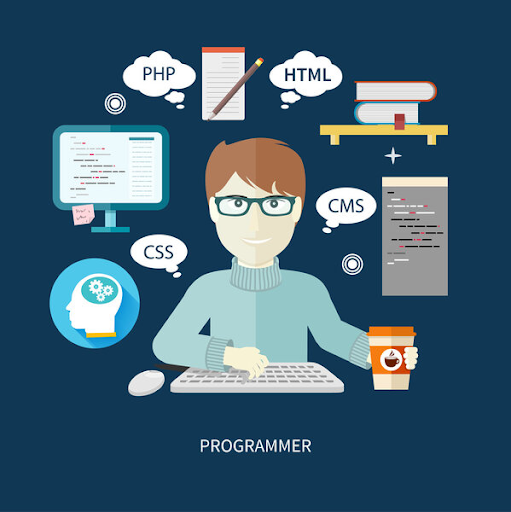Nothing has been more revolutionary than how businesses and industries have changed over the decades. The advent of the internet and the rise of web applications offered progress that people can’t reverse. Almost everything relies on small devices that give off a signal. Daily operations, multiple institutions, and even government establishments can cease running without a stable internet connection and necessary software.
A century ago, these human activities wouldn’t be possible. Everything was manual back then, and people relied on the simplest tools to get by. Speed and automation weren’t the game, and people were more inclined to do things themselves. Since then, the game has changed, and business owners can run operations through tiny screens and smart devices.
The innovations don’t stop there. Creators make the most clever and efficient programming languages to create these programs, applications, and software. The rise of JavaScript and Python paved the way for developers to create more and code better. Nevertheless, the trend now is on something opposite to coding. The era for no-code tools and software is rising.
No-code: definition
Before jumping into how no-code changed business forever, let’s discuss the nature of no-code. What exactly is no-code, and how does it work?
- Traditional coding vs no-code
First, no-code is a self-explanatory term for a specific type of software development. The layman’s idea of software development is through coding. It’s not unusual for people to start thinking of people typing all day, staring at wide screens, and eventually testing codes and running programs. It’s the traditional way that people view coding and software development.
No-code development implies the creation of these same coding products is possible without the necessity for endless typing. Yes, creating a website is now possible without resorting to typing lines such as <html></html> and producing various logic cases in curly brackets. Teenagers don’t need to become experts at a programming language to create software products.

- No-code methods
At the most technical level, no-code means relying on applications, software, and online platforms to create without coding. Non-technical users can use no-code tools to produce things that coders and developers do. Anybody can create e-commerce websites, complex programs, and games without coding a single line.
Imagine a blank visual canvas where users can drag and drop elements to create a website. Platforms such as Webflow and Airtable offer that liberty to non-technical coders who wish to create “traditionally-coded” products.
Let’s look at some numbers from industries over the years. Some industries thrive, and some industries go when people adapt to more efficient products in the market. Numbers don’t lie; these figures tell stories of what’s coming for no-code development.
- The number of citizen developers continues to rise
The demand for making everything digital is high. The increasing number of software developers indicates the job market’s response to that demand. Vailshery’s published article states, “The global developer population is expected to reach 28.7 million people by 2024, an increase of 3.2 million from the number seen in 2020.”
With the rise of developers, citizen developers are also part of the picture. Citizen developers are individuals who create software products with little to no technical coding knowledge. “Gartner predicts, ‘By 2023, the number of active citizen developers at large enterprises will be at least four times the number of professional developers.’” (Forbes.com, 2020)
- Enterprise software, or software for large organisational use, continues to increase every year
The enterprise software industry will reach a market value of up to 672B USD. The market value is an estimated 11% increase from the year before. Big corporations, various institutions, and large agencies continue to rely on software to run their business.
Big enterprises often rely on no-code tools and platforms and the work of citizen coders to produce products to a certain degree. Professional developers are still in demand to traditionally code software with the highest degree of customisation, complexity, and gradual scalability. These two subsets of developers often pertain to different market needs.
Each business has unique software development needs. While the looming threat of the takeover of citizen coders continues to question the industry, the conclusion is it won’t. As such, the next few years will exhibit the trend of higher collaboration between professional coders and citizen coders.
- The demand for no-code tools and platforms will remain a positive trend over the years
No-code software development will continue to rise to solve real-world problems. The positive trend attributes to the fact that no-code produces value just as much as traditional coding. According to a survey, 38% of people responded that no-code tools could resolve operations such as product prototyping.
As businesses expand, the nemesis of owners is time. These individuals will continue to look for solutions that help solve the problem of time consumption. The same goes for large corporations keeping up with deadlines to continue producing products for respective markets.
- The persistence of the Coronavirus and the current global pandemic issue contribute to the rise in no-code tools and software demand
The Coronavirus forced the global population to stand down. Suddenly, everything is online, and this is one of the most irreversible changes that can happen now. Workforce patterns will include shifts to remote work, relying more on no-code solutions for the same turnover of products.
Nobody ever expected a global pandemic to ensue from late 2019 until now. As such, abrupt changes in work dynamics continue to adapt to the onset of the virus and its continuous variations. One change is the shift towards a higher acceptance and adjustment towards remote work and more flexible work arrangements.
“In early 2021, Gartner released a new forecast for low-code/no-code development tools. Driven by an increase in remote work due to the Covid-19 pandemic, Gartner projected a 23% increase for the global market for this type of technology.” (Forbes.com, 2022)
Ways no-code tools and software are changing businesses
There are endless ways that no-code tools and software continue to shape the landscape of software development. People should think of this as progress in how workforces work and develop. It’s not only people that are changing with the rise of no-code. The biggest beneficiary of the no-code movement is the business industry.
No-code tools and software help save a lot of time
The first and most obvious change that no-code brings is efficiency. Because people now have tools and software that don’t require the same intensity and manual work, it cuts down development times in half. Sometimes, the time businesses save waiting to complete the software, programs, and applications is a fraction of traditional coding time consumption. Note that typing codes take up a large bulk of time depending on the scope of any project.
No-code web app builders, no-code programs, or no-code platforms are very intuitive and don’t require much tinkering around. These methods are primarily drag-and-drop elements to create programs, systems, and products. With traditional coding, or where professional individuals type nonstop to create lines of code, it takes around three months.
No-code developers can finish a project in fewer weeks or even days, depending on complexity. As long as projects are appropriately designed and laid out, dragging and dropping elements will lead to the envisioned product of the developer.
No-code software development produces a new type of workforce
There is often a high association with people whose profession lies in the field of tech and coders of programming language. In the past decades, any career in software development seems gatekept. The workforce niche of software development is deemed prestigious, offering high-paying jobs to the best coders in town. It looks like not everybody can become a professional software developer. Only selected people were part of the industry.
The case is not the same now. No-code software developers or citizen developers are becoming a thing. Moreover, this workforce type can easily topple the number of professional developers. Eventually, citizen developers will become the norm for businesses looking to maintain and continue creating systems using no-code methods.
EXAMPLE: Nationale-Nederlanden (NN) is a Dutch company that offers insurance products. The business has a team of citizen developers to create catalogues forms faster. Nationale-Nederlanden partners with ServiceNow to hire the expertise and skills of citizen coders who can recreate NN’s system.
According to Paul van Renselaar, product owner from ServiceNow, “We’re finding the most effective citizen developers typically possess frontline knowledge of various business units and are aware of potential process improvements that can drive innovation, foster creative thinking, and cut application development costs and production time.”
NN is just one of the many companies that employ citizen coders. In reality, Nationale-Nederlanden is not the only company operating the work of citizen coders. Other companies worldwide use a mix-and-match of professional developers and no-code citizen coders to keep creating, maintaining, and modifying systems and enterprise software.
No-code development is a huge opportunity for the ordinary citizen
In relation to the rise in no-code developers, one of the biggest revolutions in the industry is accessibility. Traditional insights and lookbacks of software development include finishing a four-year degree and typing code on a daily basis. Only a handful can get into the more prominent companies with even bigger names.
Now, citizen developers can start anywhere. The rise of no-code tools and software provides opportunities for all people to develop software products. Since there is no minimum technical requirement for any programming language, platforms are accessible to everyone. As long as individuals have an internet connection, they can create many software products without typing any code line.
No-code methods don’t sacrifice business security
It may seem like there is a loophole or error in no-code. In reality, no system and industry are ever perfect. Everything is subject to changes and innovation. Nevertheless, no-code tools and software don’t fall short in security and safety. These platforms are built within the security, and the tools that create these platforms already have safety protocols.
No code tools and software receive constant updates and upgrades as well. Service providers and developers of the no-code tools and software often upgrade these things. It’s customary to have routine maintenance to keep the entire no-code system in check. Standard maintenance procedures include keeping the projects, users, and data safe.
No-code increases flexibility
One of the top-performing low-code development platforms on the list is Visual LANSA. Visual LANSA provides hybrid low-code tools to make things more affordable for new developers. Maintaining large IT departments to create and maintain programs can be very expensive for enterprises, especially new businesses.
Visual LANSA aims to make things more affordable to new enterprises. In its current development, Visual LANSA 15+, the platform aims to optimise web application creation with low code.

Rigid structures and work patterns often hinder flexibility in more significant projects. Less flexible work options can greatly affect the morale of any software developer. Moreover, sometimes, the lack of flexibility manifests in the ability or inability of developing teams to use other tools. That’s not a problem for businesses who choose to use no-code tools and software.
No-code tools and software are known for flexibility, leading to higher integration between thousands of established tools. It’s not uncommon to have a working business system composed of other software, all managed and contained in a no-code system. Most no-code tools and software already have a lot of these different programs and applications in their library.
EXAMPLE: Zapier is one of the top apps for no-code creation. The platform hosts as many as 5000 other web applications and tools. Subscribers have thousands of other software at their service subscription to integrate with whatever they decide to make.
No-code saves a lot of money and cuts down expenses
Zoho Creator is another low-code platform with a wide range of capabilities for new entrepreneurs. Whether users want to create a customised application or a mobile app, Zoho Creator’s platform offers the utmost flexibility to make coding software products more efficient.
The platform has over 6 million users, creating over 7 million project apps. Zoho Creator is trusted by enterprise giants such as Amazon, Lyft, and Marriott.

One of the most significant ways that no-code tools and software revolutionise industries is via cost-cutting. Admittedly, keeping large IT departments and maintaining hardware and technology to create world-class software is expensive. It takes a lot of resources (personnel, time, and money) to complete large software projects, especially if the deadlines are tight.
No-code tools and software are one of the many solutions for businesses to keep software development and save costs simultaneously. Original costs of setting up departments can balloon since, in the long run, most companies need to update equipment and systems regularly.
No-code allows those outside development elements to be outsourced to the no-code tool or platform. It can sometimes cost only a few citizen developers and recurring subscriptions to keep the same production.
Do changes from no-code tools and software bring relevant value to enterprises?
Switching to no-code can become a very shocking culture change for traditional developers. It takes time and a lot of collaboration to optimise productivity levels between different types of software development.
The change of industries to more no-code solutions is an increasing trend for businesses globally. The change in the software development sector presents opportunities to the workforce. Whether or not these companies will switch to no-code doesn’t matter. The value of no-code isn’t only limited to the benefits and advantages of the business industry.
The persistence of no-code alone is enough to change and pave the way for future landscape software development. No-code development opens a lot of doors for future innovations and solutions in software creation.





